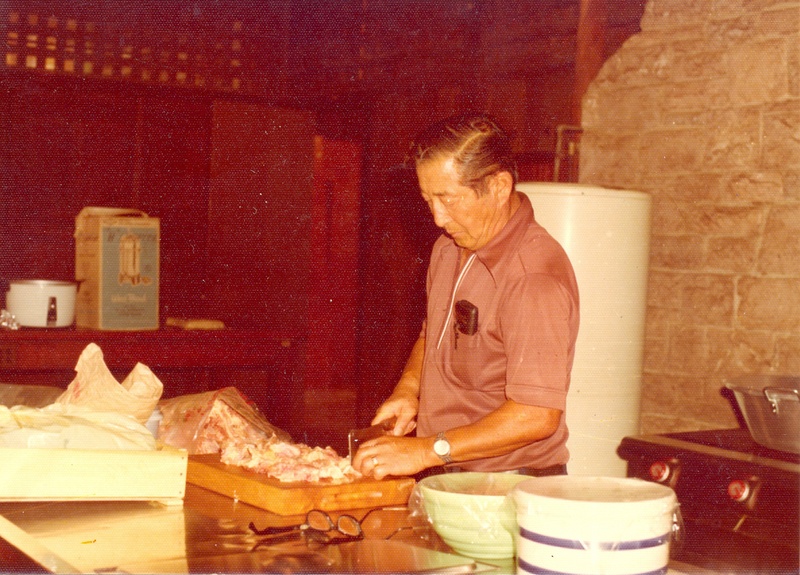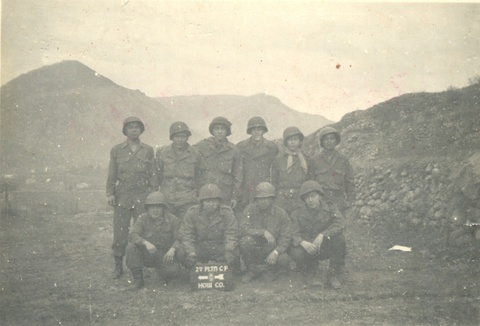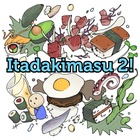Chohichi Tanaka left Itoshima in Fukuoka, Japan in the early 1900s looking for a better life. He decided to venture to America where he thought he might find work. Chohichi stopped in Hawaii for a short period, but continued to head to the mainland. He arrived in San Francisco. He went to French Camp, near Stockton, California. He became a share cropper and grew sugar beets and sweet potatoes. He met his wife through a picture bride arrangement; her name was Waka.
They had five children: Aiko, Yoshio, Masao, Mitsuko, and Hanako. They all attended school in French Camp. Education was important but money had to be made in order to support the family. The two sons had to work out in the fields at a young age and the daughters helped their mother cook, clean, and did odds and ends to help out the family. During elementary school, my dad’s teacher gave my dad a name that was easy to pronounce, “Tom.” The teacher got that name because they were reading Tom Sawyer. So, the name stuck for all of his life. I never met both grandparents. They passed away at an early age, but my aunt would say that their father always believed that children were to be seen and not heard. She also said he was a very strict and very demanding person.
The family farm life was a very hard life, getting paid very little, and the discrimination against Japanese people made it even harder to survive. So, Aiko, Yoshio, Hanako, Mitsuko, Tom, and their mother went to Japan to have the children stay with relatives, but Tom cried so much and did not want to leave his mother that Waka took him back to America leaving Hanako, Aiko, and Mitsuko in Japan to live with relatives. The daughters in Japan went to school and learned Japanese customs. They finished high school in Japan, but came back due to the unrest in Japan.
The family had a series of tragedies. Chohichi passed away, so the family had to leave the farm. The family went back to Japan with Chohichi’s ashes and buried him in Fukaoka. When they came back to the United States, they settled in Boyle Heights, Los Angeles, CA. Both Tom and Yoshio liked sports and Yoshio excelled in sumo in Little Tokyo. Sumo was played at a Buddhist church and the fans came out to watch the sport. They even got an invitation to Japan to go up against the Japanese sumo. Rumor has it that the sponsor was the Yakuza. Both Tom and Yoshio were no match against the Japan sumo but they gave it their best. Waka passed away and was buried in East LA. Then soon after that, Hanako got ill and she passed way and she was buried near her mother in East LA.
From a toddler, my father and mother would take me to the cemetery and put flowers on both gravesites. I often wondered how life would have been, knowing my grandmother and aunt. But I had my uncle and two aunts that I enjoyed being with during the holidays and special occasions. They were all wonderful people and cared about others.
The family was left without parents, so Yoshio, being the oldest male in the family, had to support and provide shelter and food for the family. They made a lot of good close friends in Boyle Heights. Even today, my daughter is friends with the family that Tom and Yoshio were friends with. That’s over 75 years of friendship!
Another family friend had a boarding house in Little Tokyo. They would feed our family many times and would not accept any money from Yoshio for the food. They did not stay at their boarding house but still extended their kindness to the Tanaka’s.
Times were getting harder for the family due to the discrimination towards the Japanese. Jobs were hard to find in Los Angeles, so Tom joined the U.S. Army before Japan attacked Pearl Harbor. After December 7, 1941, the army transferred Tom to Camp Shelby. At Camp Shelby Tom applied for M.I.S. (Military Intelligence Service). Tom had to wait at Camp Shelby since so many Japanese Americans applied for the position.
Tom did not get that position so the army gave him orders to go to Europe to join H Company, 442nd. So, when Tom joined the company they made him a cook. Tom got the “on the job training in cooking.” He soon got promoted to sergeant. Tom knew everyone and he also knew they all liked rice. So, somehow for almost all the meals he had rice for them. Tom even took hot meals with rice to them in the battlefield with the Germans shooting! Everyone knew that K Ration was not the best tasting food except for the chocolate candy. How Tom got rice (short grain) in Europe remains a mystery to me.
The battles were hard, long, vicious, and deadly and a lot of them got wounded or killed. It came to a point that the morale became low and they wondered why they were there fighting for no reason. One of the last big battles, they conquered a German concentration camp (extermination). In that camp they saw a lot of dead Jewish bodies on the side of the buildings and also saw starving Jews in another section of the camp. I was told that the smell of dead decaying bodies was all around the camp.
Now, all the soldiers realized why they were there fighting. They had a real reason for being in the war. I remember one of my father’s friends said, “how can one human being so cruel to another human being.”
The soldiers (H Company) felt sorry for the starving Jews. They gave them chocolate candy, but the Jews got sick because they were malnourished. Their bodies were skin and bones and their eyes were bulging out. My father and other follow soldiers came up with an idea and said, “let’s make okayu” (soft porridge rice). So all the cooks including my father got started to cook rice. But they found out that they did not have enough pots to cook the rice. So the cooks asked for helmets from fellow soldiers so that they could cook the rice. It was a mass production cooking the rice. I asked my father “that’s kinda of dirty using the helmets,” but he replied to me, “what would you have done?”
As a side note, even in the 1960s, when H Company had a dinner in Chinatown, Col. Keegan’s son wanted a bologna sandwich instead of Chinese food. Again, somehow my father got the bologna sandwich for him in Chinatown, and again to this day I don’t know where he got that sandwich so quickly. AMAZING!!
After the war, it was still hard for the Japanese Americans to get jobs because of the hatred towards the Japanese Americans. My father became a gardener and helped his brother who had a concession stand at Grand Central Market selling vegetables. His brother helped many Niseis and Kibeis by giving them jobs at his concession stand.
In 1952, my father got a job with the Department of Water and Power as a grounds landscaper taking care of several reservoir grounds in the Los Angeles area.
My father got married to my mom and in August 1952, I was born. I could always remember my father and mother cooking during the holidays. During Thanksgiving, my father would cook the turkey with clam stuffing. That stuffing was moist and tasted great! During New Year’s, my father would bake a fish (Tai) and have the fish look like it was swimming with its mouth wide open. It’s amazing what pieces of potatoes and wire can do.
Another dish my father made was shoyu chicken for New Year’s. I never did get his recipe for the shoyu chicken—he kept it a secret! Another dish that my parents made was kinpira. My mom would wash the gobo (burdock root) and my father would cut the gobo into small strips. At that time in my younger years, I did not want to eat kinpira, but when I got older, I enjoy that dish. All that good food my father and mother made, I just gained weight (got fat).
But in 1976, another tragedy happened in my family, my mother passed away. That following year I got married and we have three great children.
To keep the family close, my father, Aiko, and Mitsuko, and my family would go out to eat dinner at a Japanese restaurant every weekend.
Now that my father, Uncle, and two aunts have passed away, the legacy still lives on. My wife cooks great; all three of my children can cook very well. My son is good at cutting tuna so we have sashimi with hot rice. My two daughters are always cooking something different and it comes out delicious.
GOCHISOSAMA!
© 2017 Don Tanaka








